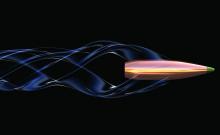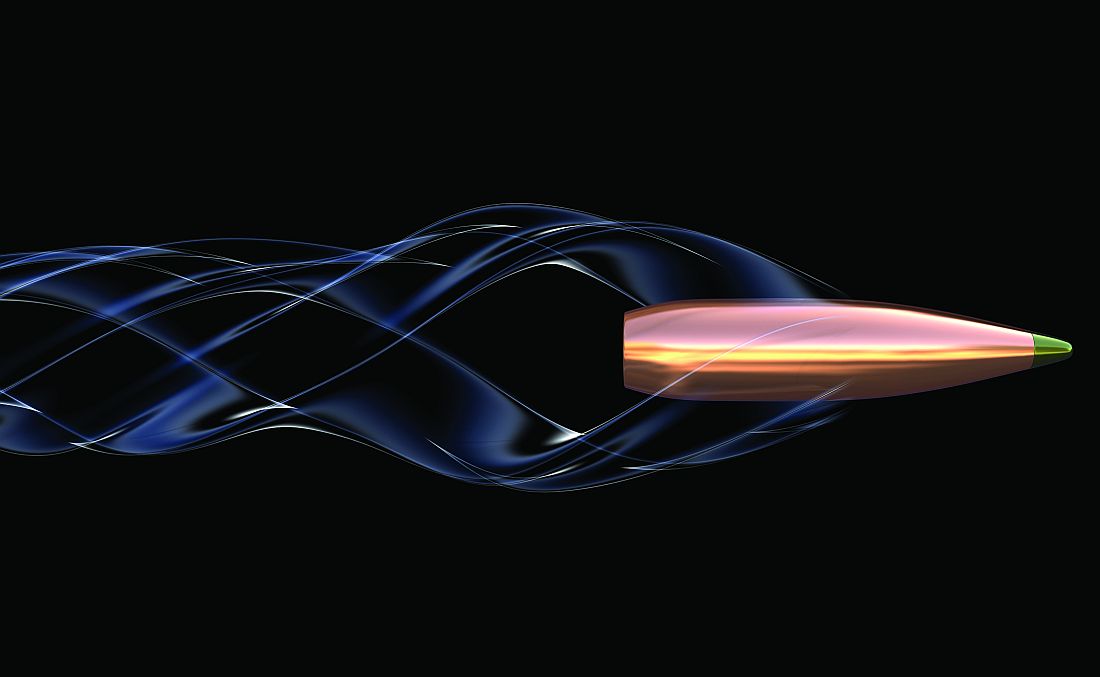User login
Selective nonoperative management of abdominal gunshot wounds has progressed from heresy a few years ago to established practice now, at least at Level I and Level II trauma centers across New England, according to a report published online in the Journal of the American College of Surgeons.
“Mandatory laparotomy used to be the only acceptable standard of care” for this patient population, but many surgeons now realize that a hole in the abdomen doesn’t necessitate immediate laparotomy. “Patients with a reliable clinical exam, who are hemodynamically stable and without signs of peritonitis, can be observed under structured protocols of close monitoring, frequent clinical exams, and appropriate imaging,” said Thomas Peponis, MD, of Massachusetts General Hospital, Boston, and his associates.
Two findings belie the main arguments that opponents of SNOM have made in favor of routine laparotomy: delaying surgery leads to devastating consequences and “unnecessary” laparotomies are virtually harmless.
The first finding was that the 18 patients in the SNOM group (1.9% of the entire study population) who eventually required a delayed laparotomy had few postoperative complications, and none of the complications appeared to be directly related to the delay in surgery. Those SNOM patients who eventually had surgery did not differ in terms of age, sex, location of the gunshot wound, vitals on ED presentation, Glasgow Coma Scale on ED presentation, presence of hemodynamic instability, or presence of diffuse abdominal tenderness on clinical exam.
The second finding concerned the 104 patients who underwent immediate exploratory laparotomy. Dr. Peponis and his associates deemed the immediacy to be nontherapeutic (unnecessary) because “the mere presence of a hole to the abdomen was the only indication” for the surgery. Nearly one in six patients operated on for an abdominal gunshot wound underwent a nontherapeutic laparotomy. Of those, 18 (17.3%) developed postoperative complications, including wound infections, ileus, pneumonia, pleural effusion requiring a chest tube, intra-abdominal abscess, acute kidney injury, sepsis, venous embolus, and a fistula related to a retained bullet.
The rate of abdominal gunshot wounds treated nonoperatively in the centers studied has grown from around 18% before 2010 to 27% in the following years. The increasing use of CT scans has bolstered the trend, but the clinical exam remains the critical element in deciding whether to operate immediately. The investigators recommended immediate surgery for all abdominal gunshot wound patients who are hemodynamically unstable or who exhibit diffuse abdominal tenderness. “There is no other place for a patient with an abdominal gunshot wound and definitively worsening clinical symptoms than the OR. The remaining patients are appropriate for SNOM under close observation, repeat clinical evaluations, and immediate OR availability in case the clinical picture changes.”
The limitations of the study are the following: First, it represents only Level I and II centers with experienced trauma teams. Second, there is no commonly established protocol across trauma centers for SNOM, giving rise to a variability in decision making and care. Third, the definition of immediate and delayed surgery was within a 2-hour window, a somewhat arbitrary time period.
The investigation was sponsored by the Research Consortium of New England Centers for Trauma (ReCoNECT). The authors had no disclosures.
Selective nonoperative management of abdominal gunshot wounds has progressed from heresy a few years ago to established practice now, at least at Level I and Level II trauma centers across New England, according to a report published online in the Journal of the American College of Surgeons.
“Mandatory laparotomy used to be the only acceptable standard of care” for this patient population, but many surgeons now realize that a hole in the abdomen doesn’t necessitate immediate laparotomy. “Patients with a reliable clinical exam, who are hemodynamically stable and without signs of peritonitis, can be observed under structured protocols of close monitoring, frequent clinical exams, and appropriate imaging,” said Thomas Peponis, MD, of Massachusetts General Hospital, Boston, and his associates.
Two findings belie the main arguments that opponents of SNOM have made in favor of routine laparotomy: delaying surgery leads to devastating consequences and “unnecessary” laparotomies are virtually harmless.
The first finding was that the 18 patients in the SNOM group (1.9% of the entire study population) who eventually required a delayed laparotomy had few postoperative complications, and none of the complications appeared to be directly related to the delay in surgery. Those SNOM patients who eventually had surgery did not differ in terms of age, sex, location of the gunshot wound, vitals on ED presentation, Glasgow Coma Scale on ED presentation, presence of hemodynamic instability, or presence of diffuse abdominal tenderness on clinical exam.
The second finding concerned the 104 patients who underwent immediate exploratory laparotomy. Dr. Peponis and his associates deemed the immediacy to be nontherapeutic (unnecessary) because “the mere presence of a hole to the abdomen was the only indication” for the surgery. Nearly one in six patients operated on for an abdominal gunshot wound underwent a nontherapeutic laparotomy. Of those, 18 (17.3%) developed postoperative complications, including wound infections, ileus, pneumonia, pleural effusion requiring a chest tube, intra-abdominal abscess, acute kidney injury, sepsis, venous embolus, and a fistula related to a retained bullet.
The rate of abdominal gunshot wounds treated nonoperatively in the centers studied has grown from around 18% before 2010 to 27% in the following years. The increasing use of CT scans has bolstered the trend, but the clinical exam remains the critical element in deciding whether to operate immediately. The investigators recommended immediate surgery for all abdominal gunshot wound patients who are hemodynamically unstable or who exhibit diffuse abdominal tenderness. “There is no other place for a patient with an abdominal gunshot wound and definitively worsening clinical symptoms than the OR. The remaining patients are appropriate for SNOM under close observation, repeat clinical evaluations, and immediate OR availability in case the clinical picture changes.”
The limitations of the study are the following: First, it represents only Level I and II centers with experienced trauma teams. Second, there is no commonly established protocol across trauma centers for SNOM, giving rise to a variability in decision making and care. Third, the definition of immediate and delayed surgery was within a 2-hour window, a somewhat arbitrary time period.
The investigation was sponsored by the Research Consortium of New England Centers for Trauma (ReCoNECT). The authors had no disclosures.
Selective nonoperative management of abdominal gunshot wounds has progressed from heresy a few years ago to established practice now, at least at Level I and Level II trauma centers across New England, according to a report published online in the Journal of the American College of Surgeons.
“Mandatory laparotomy used to be the only acceptable standard of care” for this patient population, but many surgeons now realize that a hole in the abdomen doesn’t necessitate immediate laparotomy. “Patients with a reliable clinical exam, who are hemodynamically stable and without signs of peritonitis, can be observed under structured protocols of close monitoring, frequent clinical exams, and appropriate imaging,” said Thomas Peponis, MD, of Massachusetts General Hospital, Boston, and his associates.
Two findings belie the main arguments that opponents of SNOM have made in favor of routine laparotomy: delaying surgery leads to devastating consequences and “unnecessary” laparotomies are virtually harmless.
The first finding was that the 18 patients in the SNOM group (1.9% of the entire study population) who eventually required a delayed laparotomy had few postoperative complications, and none of the complications appeared to be directly related to the delay in surgery. Those SNOM patients who eventually had surgery did not differ in terms of age, sex, location of the gunshot wound, vitals on ED presentation, Glasgow Coma Scale on ED presentation, presence of hemodynamic instability, or presence of diffuse abdominal tenderness on clinical exam.
The second finding concerned the 104 patients who underwent immediate exploratory laparotomy. Dr. Peponis and his associates deemed the immediacy to be nontherapeutic (unnecessary) because “the mere presence of a hole to the abdomen was the only indication” for the surgery. Nearly one in six patients operated on for an abdominal gunshot wound underwent a nontherapeutic laparotomy. Of those, 18 (17.3%) developed postoperative complications, including wound infections, ileus, pneumonia, pleural effusion requiring a chest tube, intra-abdominal abscess, acute kidney injury, sepsis, venous embolus, and a fistula related to a retained bullet.
The rate of abdominal gunshot wounds treated nonoperatively in the centers studied has grown from around 18% before 2010 to 27% in the following years. The increasing use of CT scans has bolstered the trend, but the clinical exam remains the critical element in deciding whether to operate immediately. The investigators recommended immediate surgery for all abdominal gunshot wound patients who are hemodynamically unstable or who exhibit diffuse abdominal tenderness. “There is no other place for a patient with an abdominal gunshot wound and definitively worsening clinical symptoms than the OR. The remaining patients are appropriate for SNOM under close observation, repeat clinical evaluations, and immediate OR availability in case the clinical picture changes.”
The limitations of the study are the following: First, it represents only Level I and II centers with experienced trauma teams. Second, there is no commonly established protocol across trauma centers for SNOM, giving rise to a variability in decision making and care. Third, the definition of immediate and delayed surgery was within a 2-hour window, a somewhat arbitrary time period.
The investigation was sponsored by the Research Consortium of New England Centers for Trauma (ReCoNECT). The authors had no disclosures.
FROM THE JOURNAL OF THE AMERICAN COLLEGE OF SURGEONS
Key clinical point: Selective nonoperative management of abdominal gunshot wounds has progressed from heresy a few years ago to established practice now.
Major finding: 197 patients (91.6% of the nonoperative group and 21.4% of the entire study population) were successfully managed nonoperatively and were discharged without requiring any abdominal surgery.
Data source: A retrospective review of the medical records of 922 gunshot wound patients treated at 10 New England trauma centers during a 20-year period.
Disclosures: The investigation was a multicenter study of the Research Consortium of New England Centers for Trauma (ReCoNECT). Dr. Peponis and his associates reported having no relevant financial disclosures.

